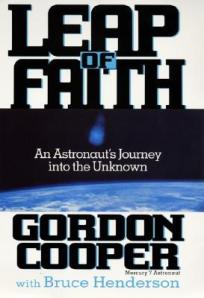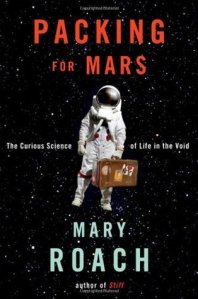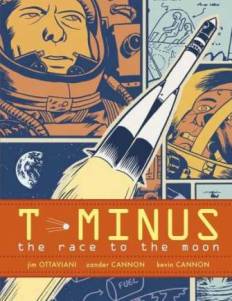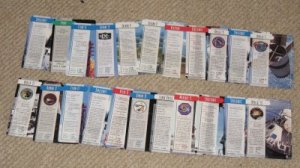 Only three men served in all three space programmes – Mercury, Gemini and Apollo. They were Virgil ‘Gus’ Grissom, L Gordon Cooper and Walter M Schirra. All three flew both Mercury and Gemini flights, but only Schirra flew in Apollo. Grissom was commander of Apollo 1 and died in the fire during its plugs-out test. Cooper was commander of the back-up crew for Apollo 10, and should have been given command of Apollo 13. But Alan B Shepard had by then returned to flight status after surgery to cure his Ménière’s Disease and, since he was in charge of crew assignments, he gave himself the mission. (His crew was later swapped with Apollo 14’s due to insufficient time for training.) Cooper did not take being passed over for command well, and resigned from NASA shortly afterwards.
Only three men served in all three space programmes – Mercury, Gemini and Apollo. They were Virgil ‘Gus’ Grissom, L Gordon Cooper and Walter M Schirra. All three flew both Mercury and Gemini flights, but only Schirra flew in Apollo. Grissom was commander of Apollo 1 and died in the fire during its plugs-out test. Cooper was commander of the back-up crew for Apollo 10, and should have been given command of Apollo 13. But Alan B Shepard had by then returned to flight status after surgery to cure his Ménière’s Disease and, since he was in charge of crew assignments, he gave himself the mission. (His crew was later swapped with Apollo 14’s due to insufficient time for training.) Cooper did not take being passed over for command well, and resigned from NASA shortly afterwards.
Leap of Faith is Cooper’s autobiography. The title is a pun on his Mercury flight – he called his spacecraft Faith 7 to “symbolize [his] faith in the launch team, [his] faith in all the hardware that had been so carefully tested, [his] faith in myself, and [his] faith in God” (p 37). Those beliefs, however, take up very little space in the book. The first half recounts his experiences during the Mercury programme, focusing chiefly on his flight. This is hardly surprising – it was a record-breaker at the time, the longest and most complex of the Mercury flights. Also, a total power failure after his twenty-first orbit resulted in Cooper having to manually pilot his spacecraft out of orbit and through re-entry, something which had not been done before.
So far so typical. The original astronauts were a breed very much aware of their achievements, and in their autobiographies they usually claim credit for almost anything that happened during the Space Race. Cooper, for example, writes that he and Pete Conrad came up with idea of having mission patches for space flights since they wanted one for their Gemini 5 flight. They successfully persuaded NASA Administrator James Webb to allow the practice – which has continued ever since and, according to Cooper, was named the “Cooper patch” in a memo by Webb.
In many respects, Cooper’s childhood differed little from those of the other Mercury astronauts – born in the late 1920s, an early introduction to aeroplanes and flying – but his family were more aviation-minded than his peers and, in fact, he knew a number of the flying pioneers of the day. Both Wiley Post and Pancho Barnes (of the Happy Bottom Riding Club) were family friends. He even met Amelia Earhart. The Cooper family owned their own plane, which he learned to fly at a young age; and they often used it to visit family or their holiday cabin:
We’d take off and follow the highways, most of them gravel in those days. When we need gas, we did what was common practice among pilots then: kept an eye open for a gas station. when one came along, we’d land on the road, taxi up to the pump, and say “Fill ‘er up”. (p 95)
The final third of Leap of Faith, however, is completely unexpected. Cooper had witnessed several UFO sightings while serving with the USAF in Germany, and during the 1970s seems to have come under the influence of con artists claiming telepathic contact with aliens. He is quick to point out that he never saw a UFO during his Mercury or Gemini flights, and the only such sighting he knows of by an astronaut in orbit was James McDivitt‘s during Gemini 4, which remains unexplained to this day. Nonetheless, Cooper was a firm believer in flying saucers, and one point became involved with a group which tried to sell technology based upon advances telepathically given them by aliens. Cooper was clearly impressed by the group’s leader, Valerie Ransone, although she does not appear especially convincing in the book. Another member of this group, Dan Fry, allegedly gained his doctorate at St Andrew’s College, London. But the only St Andrew’s College in London is a private college for overseas students which doesn’t offer doctorates, and doesn’t appear to have existed before the millennium…
Perhaps Cooper simply got the details wrong. There are other areas in Leap of Faith where he seems to have been confused. For example, when he first met Alexey Leonov at the 16th International Astronautical Congress (October 1965), he describes the cosmonaut as “the first, and up to then only, man to go EVA” (p 134). But the Congress took place after Gemini 5 (August 1965), and Ed White had gone EVA in Gemini 4 (June 1965). Yet elsewhere in the book, Cooper’s command of detail appears quite strong. His accounts of his Mercury and Gemini flights are detailed and interesting. The anecdotes he tells of his subsequent trips around the world for NASA are also entertaining.
Cooper’s memories of Wernher von Braun, however, are somewhat troubling. It’s clear he liked and admired the man, but that’s no reason to lie about the scientist’s past. Cooper claims von Braun never joined the Nazi Party (p 150), which is untrue: von Braun joined in 1937, and became an officer in the Waffen-SS in 1940. Cooper’s history of von Braun is close to the white-washed one presented to the American public – “Our Germans are better than their Germans” – during the Space Race, but by 2000, when Leap of Faith was published, there was surely no good reason to continue the fiction.
Leap of Faith, unsurprisingly, provides a good account of the flight of Faith 7, and though it does not cover Cooper’s upbringing or career in great detail, it is very readable and contains a number of entertaining anecdotes. However, it contains some surprising inaccuracies, and the final section on UFOs seems completely out-of-place. An odd book, and perhaps more for an enthusiast than for anyone with a casual interest in early manned spaceflight.
Leap of Faith, Gordon Cooper, with Bruce Henderson (2000, HarperCollins, ISBN 0-06-019416-2, 267pp + index)








